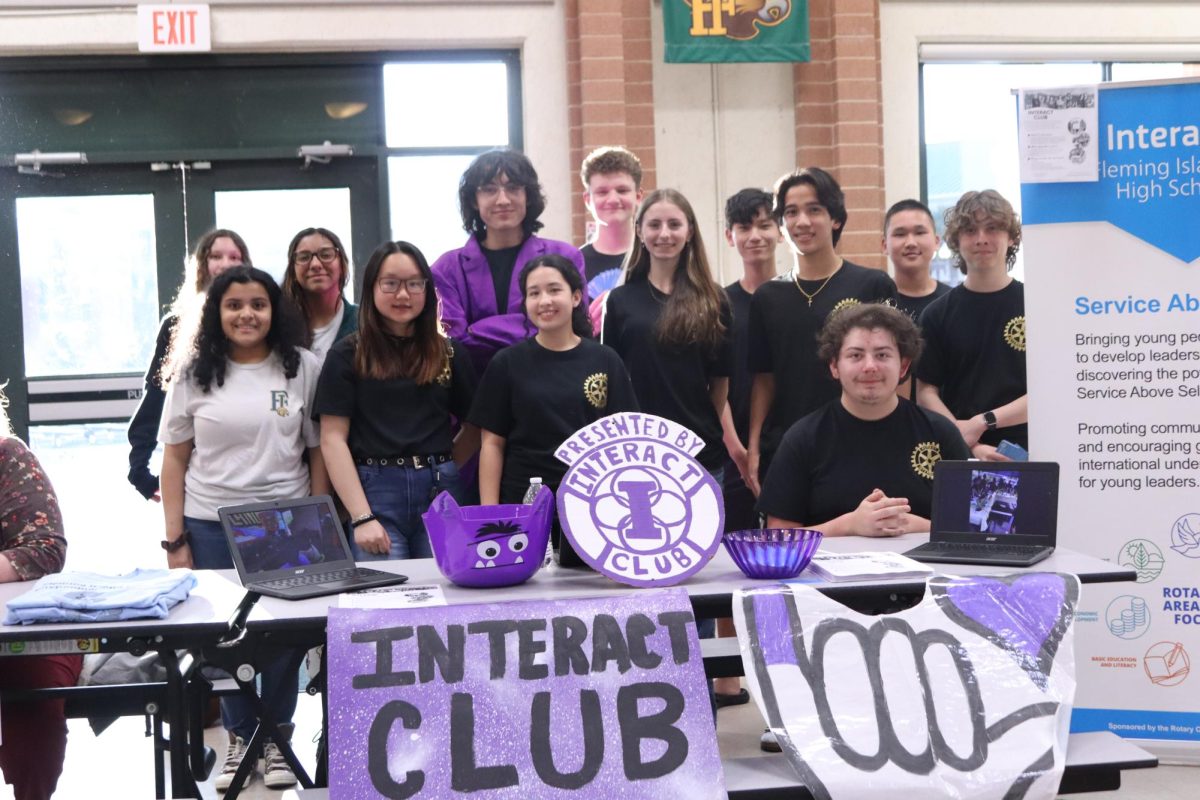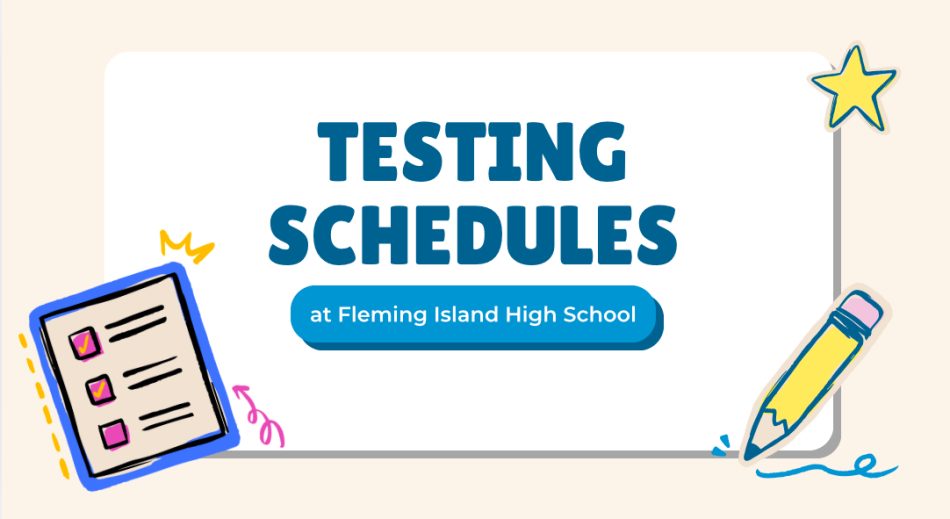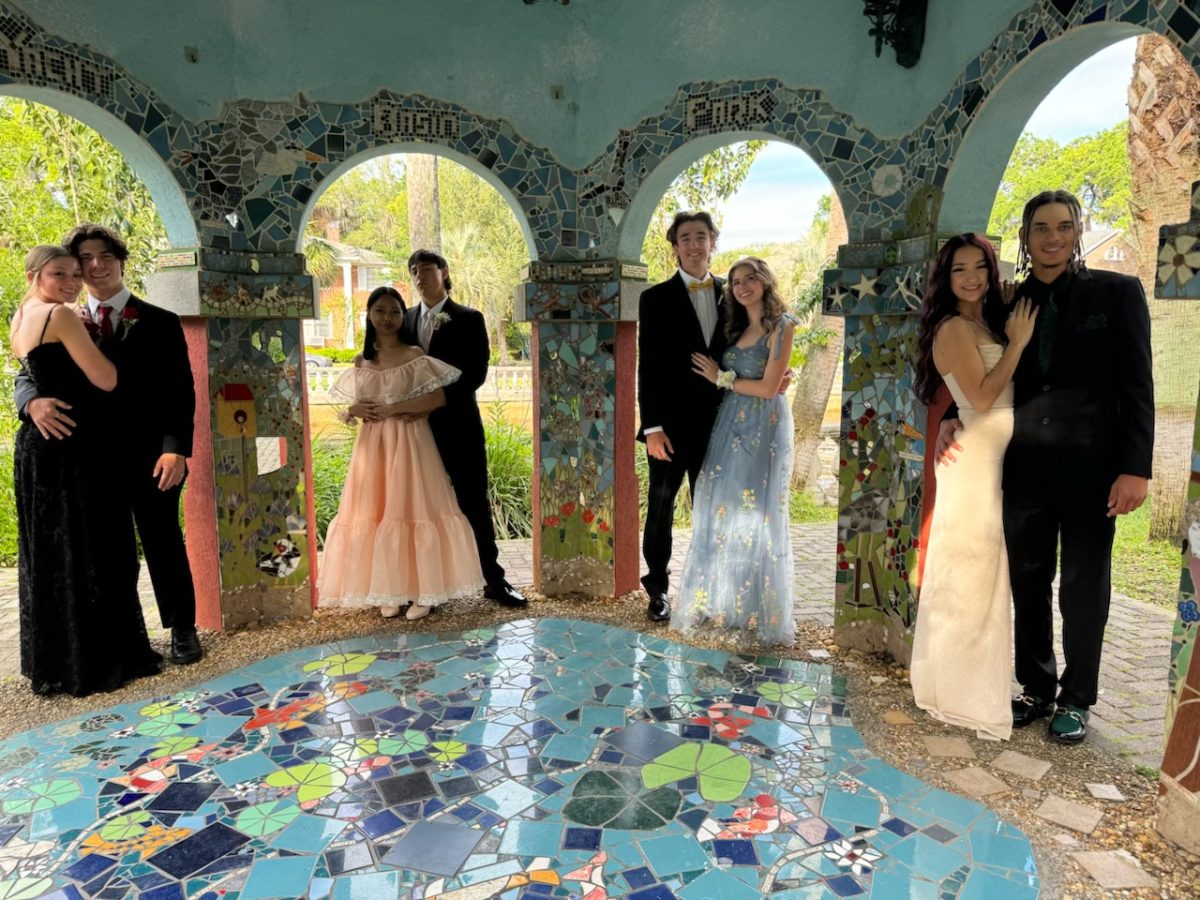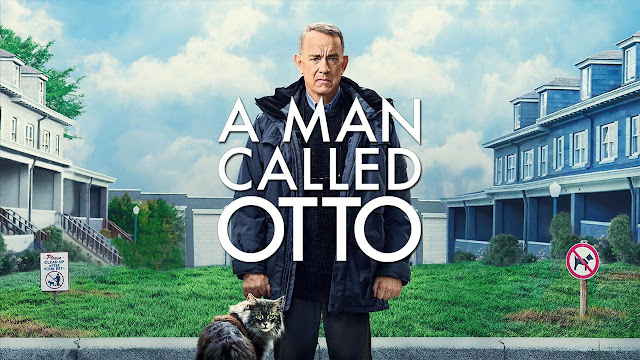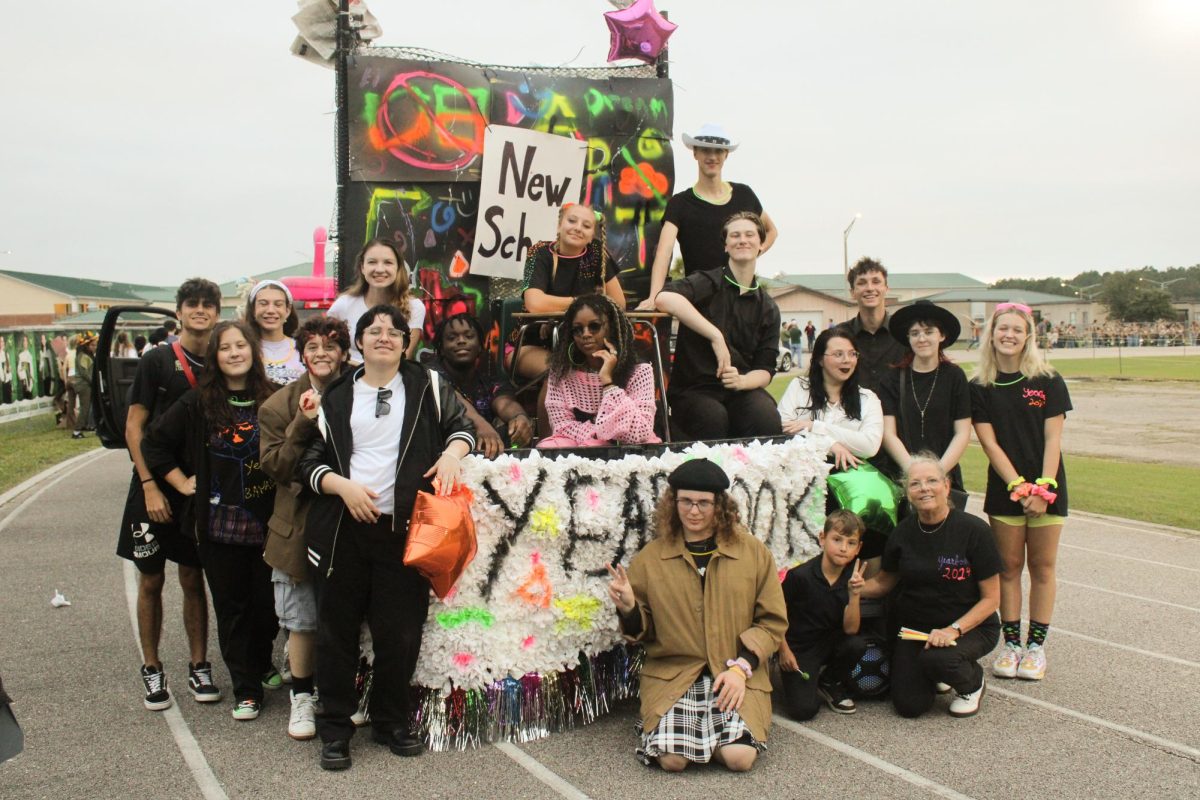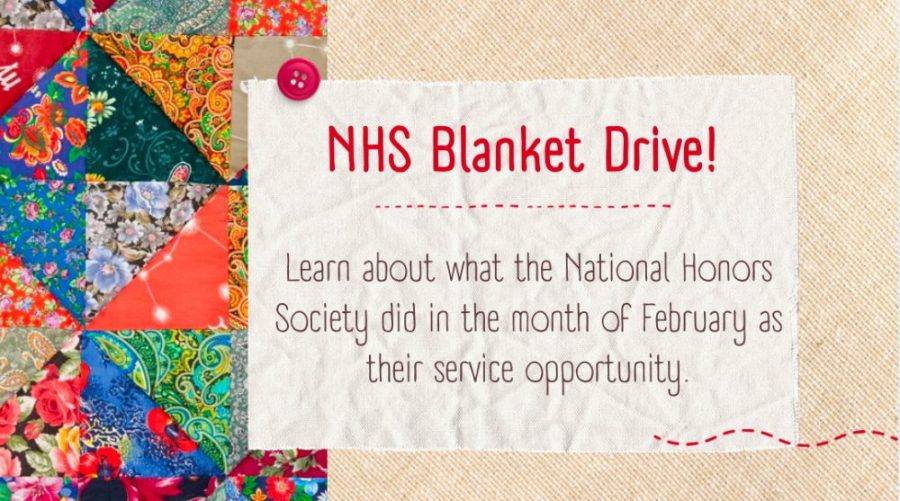It’s that time of the year again.
While the end of spring often coincides with an onslought of stress, (final exams, prom, graduation, etc.) a certain, special circle of students is celebrating to their hearts content: the Yearbook Staff. As the editor of this ragtag group, I’m eager to provide my insight.
Ever since the beginning of the academic year, the yearbook staff has been hard at work putting together this year’s volume of The Talon. From photography, interviews, graphic design, caption writing, and editing for final approval, there’s a lot of important work that goes into producing each page of the yearbook, nevertheless the entire publication.
Here at Golden Times, we want to give special regognition to our school’s admittedly more recognized publication: the yearbook, by chronicling the staff’s hardest workers, and celebrating their success. With all the hard work the yearbook staff puts into serving our student body, it’s a surprise to no one that the last three yearbooks have personally recieved special awards from the Walsworth publishing company. Without further ado, here is your exclusive look into Volume 21 of The Talon‘s production process.
Theme construction & graphic design
In the first two weeks, the yearbook staff got to meet eachother and get their creative juices flowing. Like years prior, the editors (me) assigned “theme projects” to the staff. These theme projects consisted of a student’s formal proposal for the yearbook theme, along with some potential color palletes, fonts, design elements, and creative possibilities. After the presentations, the editors met with eachother and formulated a clear vision for how to execute that theme. While I won’t talk too much about the yearbook theme, (we’re pretty tight lip!) I would like to feature the yearbook staff’s prominent artists: Seniors Julieta Ramos Correa and Ivan Steckley. Julieta’s theme presentation was primarily where the yearbook staff drew inspiration from, with important additional elements coming from Spencer Middleton. After the theme was formally chosen, Julieta and Ivan worked with eachother to churn out graphics. After this point, the editors worked to finnalize spread templates and assign pages to the rest of the staff.
Something important to mention about this year’s design is its graphical abundance. 100% of this year’s graphical elements were student produced, giving each page its own unique flare, while also not relying, at all, on premade ClikArt. Ivan, like many others, was new to the yearbook staff this year. Despite this, he was undeniably instrumental in its design. “I’ve always been drawing and doodling since I was little, so I wanted to help out anyway I could… by lending an extra hand.” This he certainly did. While the yearbook definitely got a lot out of Ivan‘s membership, he got a lot out of it too, sharing that, “It’s helped me figure out my art program much more, and has gotten me more comfortable with the various tools.” He also states that the yearbook has “helped keep my [artistic] range open.” Considering Ivan is an artist, both in and out of yearbook, broadening his artistic range is certainly a benefit not to take for granted. I next asked Ivan why he joined the yearbook staff, with which he replied: “I wanted to join because I like working on big collaborative projects, and I also wanted to make an impact on my senior year; I hadn’t really done that in year’s prior.”
This is certainly a sentiment I can emphathize with. When I joined the yearbook staff 3 years ago, I felt incredible satisfaction because of the impact I was able to have on the school. While such an impact is certainly fulfulling, it also comes with challenges. Ivan, along with his graphic design, was also tasked the common journalistic duties of the wider staff: captioning, and it’s daunting brother, interviewing. “When I joined the yearbook staff, I thought that I was a pretty outgoing person. While this is true for the most part, I found that it was really hard to interview people. Having to call a teacher on the phone, asking to interview one of their student’s, is surprisingly scary,” admits Ivan. While he faced difficulties, Ivan also let me know that he’s greatly appreciative of his chance to work on the yearbook. Moreover, he encourages anyone, regardless of their skillsets, to join the yearbook staff. “The socially introverted,” he explains, “have a lot to gain from this experience.”
While not being the most traditionally artistic individual, I have to say that I’m incredibly impressed with this year’s graphic elements. Despite taking lots of (occasionally unsolicited) criticism and recommendations from the whole yearbook staff, we have largley our head artist, Julieta Ramos Correa, to thank for the intricate beauty present all throughout Vol. 21 of The Talon.
Caption and story
While the artistic side of production may be a vast, respectable undertaking, we mustn’t forget about the most essential aspect of the yearbook: its story. Captions, commentary, and interviews are the medium through which the yearbook conveys the story of our wonderful school, and all its unique students.
Junior Ezra Forte has been on the staff for two years, and, while being relativley versatile, has certainly found a niche in caption writing. Having proofed his work myself, I can say confidently that his work is up to The Talon‘s award winning standard. As a literary individual, I think it’s important to present one’s thoughts in a nuanced, complex manner. Ezra echoes this, stating that “I would say [captioning] has helped me articulate my words better, especially when quoating people; sometimes I’d ask small questions and then incorporate them in [the] form of paraphrase. The whole experience of captioning has improved my ability to talk to people as well- as odd as that may seem.” Considering the inherant social skills one is asked to use as a member of the yearbook staff, it’s not a surprise that Ezra believes his have been improved: after all, working on the yearbook staff gives one a lot of practice. Ezra also elaborates on his interviewing process. “In instances of trying to figure out what to ask people for interviews, I think of what I’d like to be asked as an athlete myself. I try to ask questions that can produce more valuable substance, rather than the bland ‘why do you like soccer?’ Some examples of questions I’ve asked are: ‘how do you support your teammates when things aren’t going your way in the game?’ and ‘what’s the best piece of advice you’ve recieved from your coach?’ Being the editor, I will say that Ezra‘s emphasis on avoiding bland questions elates me; there’s no worse feeling than reading athlete interviews that all sound the same. Considering all his hard work, I found it appropriate to ask Ezra how he feels once his work is printed, to which he say’s “It’s a bit surreal because I’ve never done anything like this. I get to sit back and exhale all the tension from being on the staff as a whole. The feeling of relief once it’s been sent out is one I don’t take for granted.” I second that!
Ezra isn’t the only impressive storyteller, however. Madisyn Taite, also a Junior, shares that she loves seeing her stories in print because “I love writing, and I love to see when you can feel their passion about their stories.” Moreover, she shares that her favorite page to caption for was the early childhood education page. “It’s so cute seeing the student’s relationships with the eaglets, and I get to use cute silly words.” Madisyn couldn’t be more right; depending on the subject being covered, the yearbook staff adapts their caption styles and diction to be appropriate for the various subjects we cover. Whether it be sports, academics, or student life, our students get the coverage they deserve. Further, as Ezra shared prior, captioning is an incredible way to improve your writing and communication; in lieu of this, Madisyn attests to a latent anxiety when seeing her work in print, as she states, “I tend to over obsess over my writing and see the mistakes, even if others don’t.” Such worries are native to the writer, and only indicative of vast improvement! Senior Lakin Thomas, like Madisyn and Ezra, has also been on the yearbook staff for two years. While Madisyn’s favorite captions are typically academics, Lakin prefers athletics, particuarly because of all the work FIHS athletes put in. “These players put in so much effort into their sport… and for me to put it into words, makes me so happy that I get to highlight such talent in the yearbook. The players all have such personality that makes them true to themselves, and I love seeing all of the different people, with different personalities, coming in and sharing the same love for being an athlete. They definitley make the yearbook personal for sure.” Lakin‘s love for interviewing athletes is an adoration I share passionately. Being the editor now, I don’t conduct many interviews, but I’ve been in her place. Interviewing athletes was always interesting for me, because, as a frail, nerdy, intellectuall type, they couldn’t be more different than me. Because of this difference, i get to learn about someone unlike me in every way, and it’s really fulfulling. This diversity across our student body is why the yearbook is so important: we get to tell each and every student’s story in a beautifully personal way.
Photography
Closely following story in importance, and superceding it in some instances, is the yearbook’s photography. Friends smiling together, scholars portraited in neat rows, and athletes bounding across the field, are all necessary elements to a successful yearbook. Lots of schools rely on smart phone photos almost entirely, while some schools line their books in stunning professionalism. Our book, while certainly accepting submitted cell photography for the student life sections, is, for the most part, comprised of professional-grade photography using Cannon DSLR cameras. This means that many on the yearbook staff explicitly train themselves as photographers to complete the job. Before rising to editor, I was a prevelent photographer for the yearbook staff myself. While also having taken Digital Photography classes at FIHS, I will admit that my work on the yearbook staff is where I learned the most about photography. Being forced to photograph various environments like classrooms and the different sports, whether they be on the football field or in the gymnasium, has forced me to adapt my photography to different settings, and challenging lighting. This opportunity is almost the sole reason why I’m now passionate about photography, and intend to go into photojournalism. Capturing the emotions of others, and being able to feature their passion, is an activity I cherish dearly. Moreover, I can say confidently that my favorite photos to take were our school’s drama department. There’s a special satisfaction I get from watching young actors put their heart out on stage, and memorializing all their hard work.
While my duties have shifted, and I didn’t do nearly as much photography in this book compared to year’s prior, there are still plenty of passionate photographers on the staff. Junior AJ Olivolo (like me!) got into photography his freshmen year, sharing that “one of my senior ‘moms’ was an editor for the yearbook at my old school, and she introduced me to photography; I just fell in love with it immediately.” Every photographer on the yearbook staff is typically forced to be incredibly flexible in what they take photos of. AJ, for example, primarily does sports photography. Despite this, AJ remains versatile. He shares that his favorite thing to take photos of this year has been the ASL “HANDS performance. Capturing such an amazing piece of quality entertainment, and all the sweet moments that occurred, made the experience even better.” As someone who just watched the HANDS show, I’d certainly agree. The senior song performance, and many others, were signifcantly more emotional than they deserved to be. AJ‘s emphasis on the emotional aspect of photography is a sentiment I share happily. Last year, during the end of year theatre performance of Percy Jackson’s Lightning Theif, some of the senior thespians walked up and gave heartwarming speeches. Despite not being in theatre, or knowing even a sliver of ASL, I shed a slew of tears behind my viewfinder during both performances. Taking photos can undoubtably be an emotional experience, especially when your subject is overflowing with passion. Photography is also emotional during the post-process, particuarly when the subjects get to see your work. AJ shares that he enjoys “seeing the smiles light up on their faces when they see an awesome picture of themselves,” further stating that it “warms my heart, and validates my skills in photography.” I couldn’t have said it better myself!
Editing process
As I’ve illustrated, the yearbook is an incredibly complex, multifaceted product, requiring lots of inter-disciplinary work to construct. The publication would never be possible without the hard work of each yearbook staff member doing their best to caption, photograph, and illustrate to their fullest extent. In addition to these more well known jobs, there’s also a vast amount of behind the scenes work that goes into the book. For the past three yearbooks, each year’s staff has consisted of two “Editors” that serve as leaders, creative directors, and managers of the wider staff. It’s the job of both editors to delegate work to the rest of the staff, and even eachother. Me, (Logan Michael) and Rylee Porter served as the editors of Volume 21 of The Talon. While I can only speak for myself, I will say that the role of Editor took up the saddening majority of my time. While Rylee filled more of a manegerial position, handling spread assignments, indexing, deadlines, and spreadsheets galore, I focused on the creative aspects, like editing each page’s captioning, graphics, and photography, and eventually giving the final seal of approval before submission, for all 380 pages.
Beyond the student leaders of the staff, and even more behind the scenes, is the publication company’s sales representative. Because FIHS partners with the Walsworth Publishing company, the yearbook staff, primarily the editors, work closely with our Walsworth sales representative: Bridgette Norris. Because of the complexity and length of The Talon, we work very closely with the publishing company. Since last year, The Talon has included a senior panoramic photo, which folds out beyond the length of the book. While sounding simple, there’s a lot of technical design aspects that go into producing it, with many headaches to be had. For these types of assignments, the yearbook staff worked happily with Bridgette. This is Bridgette‘s second year being a sales representative, and her first year working for Fleming Island. Her job consists of traveling from school to school to help plan, design, and finish each school’s book. She shares that, “due to Fleming Island having a bigger book, I get to work with them a little bit more to help meet their needs.” Bridgette also shares that Fleming Island “has a lot of leadership positions for the students, allowing them to make impactful decisions.” This is in contrast to some of Bridgette‘s smaller schools, where the advisers may be a bit more hands on in the yearbook’s production. Bridgette herself went to college for journalism, and has a passion for communications. Before her work as a sales rep, she used to teach media classes, and even sponsosred a school newspaper in Orlando, Florida, where she herself went to high school. Coming from someone who was a journalism student, journalism teacher, and now someone who manages hundreds of student journalists, she’s got a lot of praise towards joining the yearbook staff.
“Even if journalism or communications isn’t your passion, the yearbook staff teaches a lot of skills that will be present and useful across all careers, like marketing, graphic design, writing, and photography. Lots of practice goes into making these books.”
Thank you
As someone who’s now published 3 yearbooks at Fleming Island High School, editing the latest, I’m beyond grateful for this experience, and have a plethora of people to thank.
- Thank you Rylee Porter, for editing this book with me.
- Thank you Mrs. Merrilees, for being an incredible sponsor, and an even greater person.
- Thank you Ms. Berry, for taking over as our new yearbook sponsor; I wish you the best of luck.
- Thank you Julieta Ramos Correa, for desigining our book’s cover, endsheets, and other elements, while baring endless criticism.
- Thank you to our photographers, Ezra Forte, AJ Olivolo, and Sybella Bertolini.
- Thank you Lakin Thomas, Aidan Taggart, Lily Katz, Bailee Musco, Nicole Burnham, Spencer Middleton, Ashleigh Young, Maryn McDade, Madisyn Taite, Romeo Trahan, Ivan Steckley, and Johnathan Thomas, for being excellent staff members.
- Thank you to all the FIHS yearbook alumni I’ve had the chance to work with; I owe a lot of my knowledge to you.
- Thank you to the previous editors, Madison Merrilees and Loreli Hult, for teaching me everything I would ever need to know to complete this ambitious position.
- Thank you FIHS, for allowing me to express my creativity and journalistic ingenuity. -Senior Editor, Logan Michael
Buy yours now!
If you’d like to celebrate the yearbook staff’s hard work, and get an amazing product while you’re at it, you can purchase your yearbook now at Yearbookforever.com!






